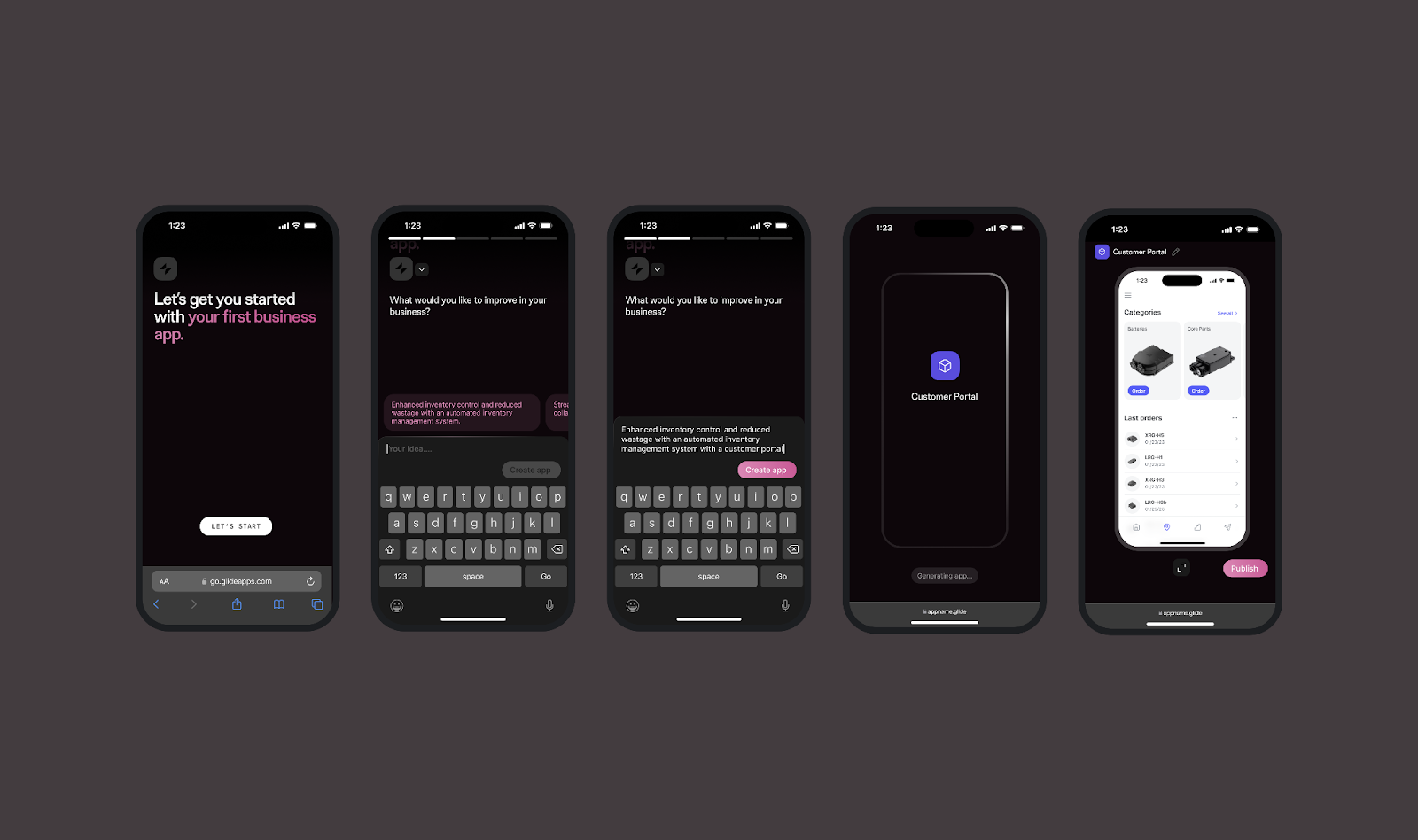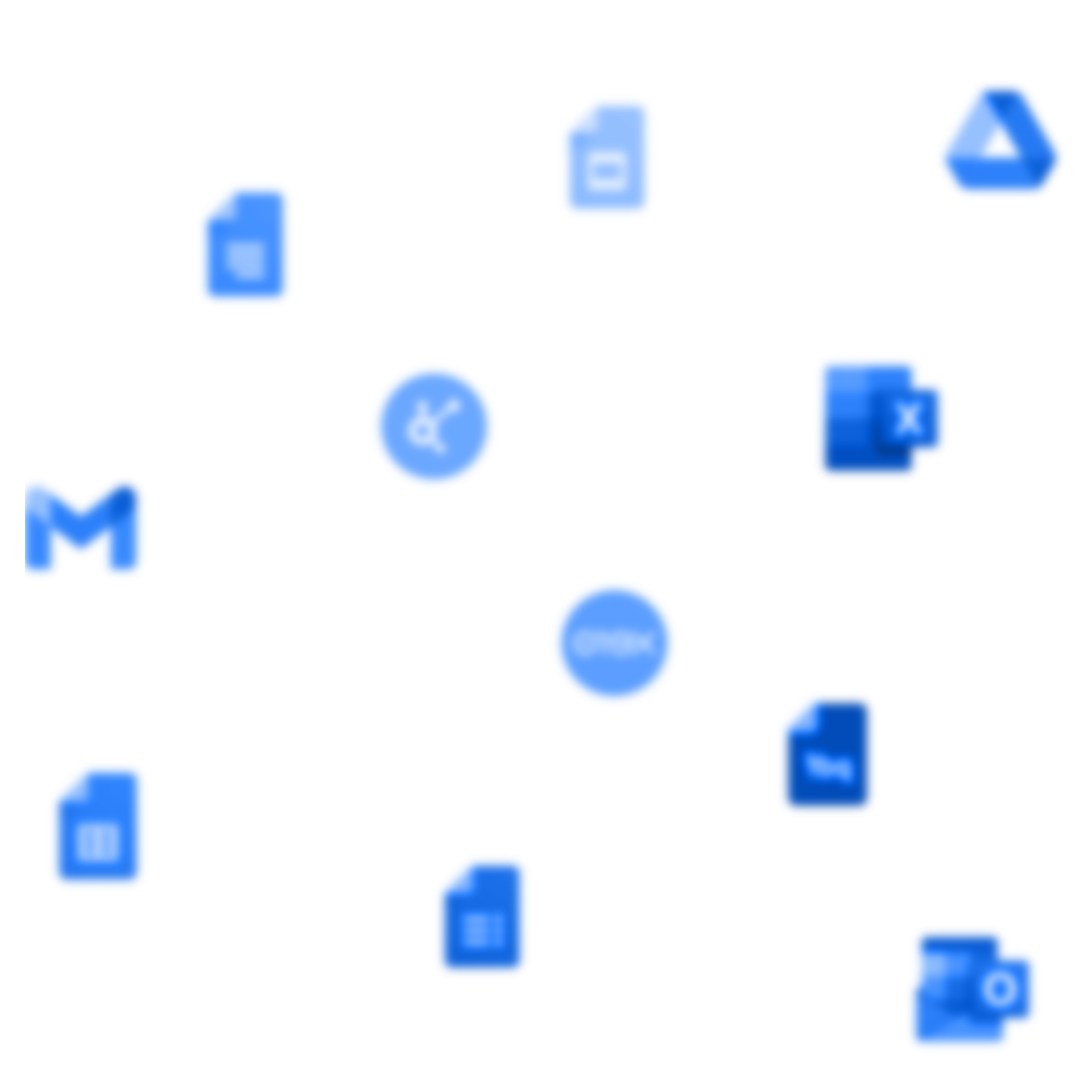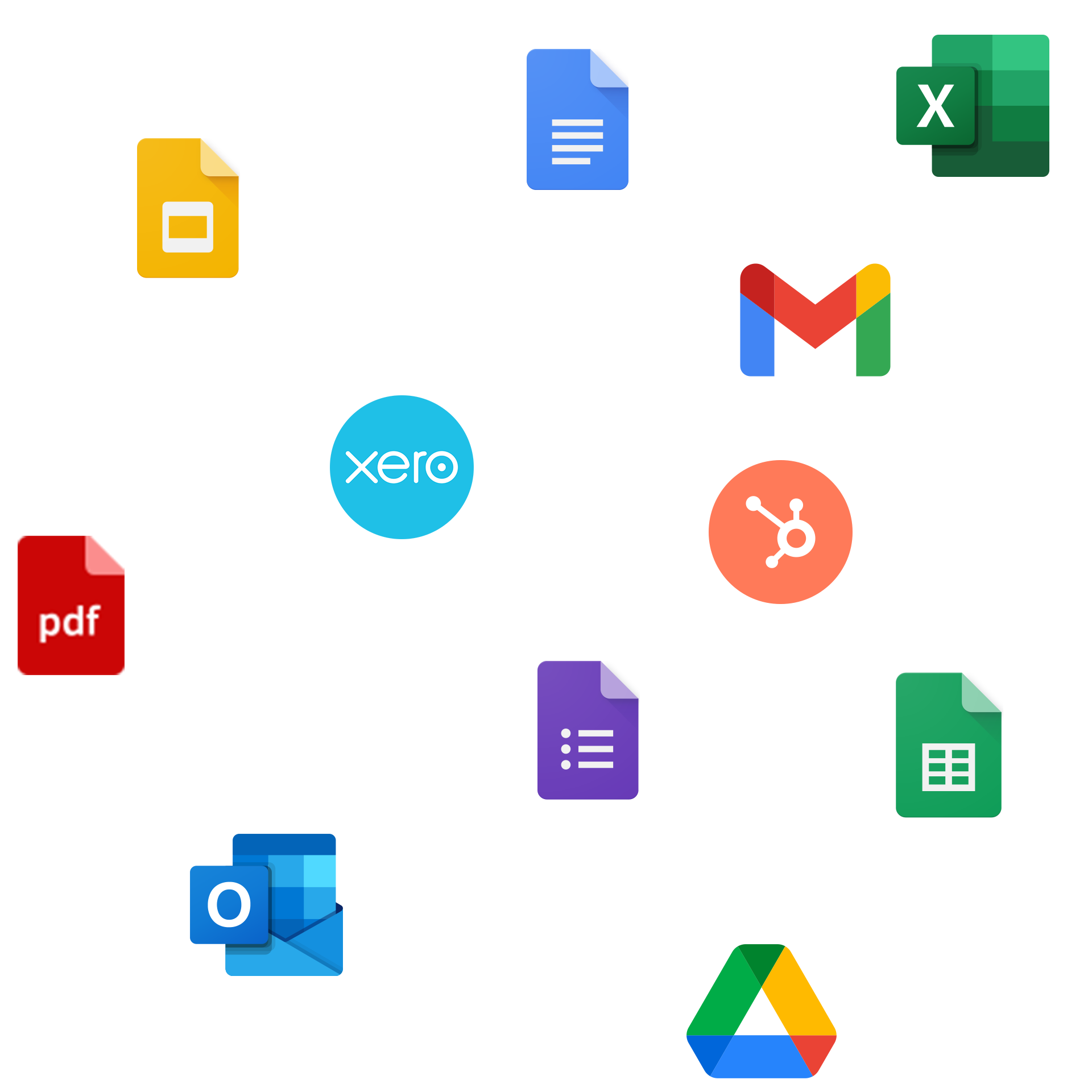
Two possible approaches to AI and no-code development
At Glide, we’re dedicated to building a platform that allows anyone to create custom software that users love, without coding or design skills. Our approach is to remove extraneous details from the software creation process so our users can focus instead on the challenge they’re solving. AI brings us even closer to making this a reality with its promise of translating a user’s unstructured description of their problem (i.e. a natural language prompt) directly into structured app features like screens and calculations that solve their problem.
Jumping directly from a description of a problem to its software solution is the great promise of AI-driven software development. But, when we think more broadly about the value of AI to our customers, we think they can benefit much more by enhancing their own apps with AI features tailored to their specific use cases, that end-users can interact with. We refer to these two approaches as developer-focused AI and user-focused AI, respectively.
We see a lot of promise in developer-focused AI making software creation at least 10x easier. We recently spent a sprint prototyping an AI-assisted app builder that produces reliable results. But we’re still in the research phase and have some tough questions to answer before this approach will satisfy our customers.

Reflecting on our mission to bring the power, beauty, and magic of software to a billion new creators, we see even more value in user-focused AI. When we put AI features into the hands of customers building apps, who understand the unique shape of their own problems, we see novel, highly-specialized AI apps applied to a broader set of problems and distributed to 100x as many users.
For over 40 years, people have used spreadsheets to explore new ideas, build businesses, and organize their lives. The success of spreadsheets is due to their remarkable balance of simplicity, flexibility, and power; they’re simple enough that anyone can learn the basics in minutes, they’re flexible enough to adapt to new problems, and they’re powerful enough to solve problems people care about.


.png)



